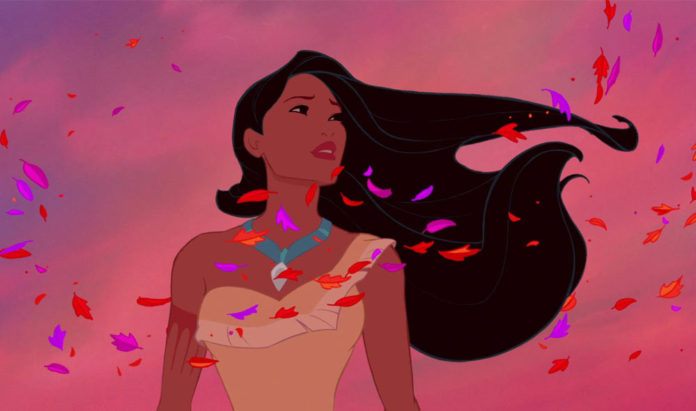I am not exaggerating when I tell you I have probably watched Pocahontas over 500 times. I so badly wanted to be Pocahontas — hanging out with her cute animal friends, running in the forest, casually cliff jumping, swimming in lakes with her BFF, all while developing a secret romance with a strange but handsome foreigner; it was truly the dream. Little did I know that this movie, whose heroine I idolized as a kid, was my first exposure to the topic of colonialism.
The movie is based on the real-life character of Pocahontas, the young daughter of the Great Powhatan, who saved the life of colonialist John Smith when she was just 10 years old in 1607. She became a leader, showing extreme courage, cleverness, and brilliance in the face of extraordinarily daunting circumstances that Indigenous people faced.
Pocahontas was a groundbreaking film, as it starred the first woman of color as a Disney princess, and a strong female lead who did not need to be saved by a man, but instead was willing to sacrifice her own life to save his. She was a cross-cultural communicator, diplomat, and peace-maker in her nation. Pocahontas was the first of many subsequent Disney films starring strong, female leads, such as Mulan, Tangled, and Frozen.
Despite the fact that Disney fudged a lot of the details of the real-life Pocahontas in order to create a forbidden romance situation between her and John Smith, the film actually did a lot (actually the bare minimum, but let’s give them a bit of credit; this is 1995 we’re talking about) when it came to casting and research. They cast Native American actors to play the speaking roles of the Indigenous characters in the film, and Irene Bedard (who voiced Pocahontas) said in an interview that she was involved in making the dialogue less European and more true to Native American expression.
The movie also shows European colonists for who they truly are: bloodthirsty destroyers of natural land and habitats in search of wealth and fame, willing to destroy any “savage” who dared get in their way. Russell Means, who voiced Chief Powhatan, said in an interview that he was shocked to see “the Eurocentric males … admitting why they came here — to kill Indians and to rob and pillage.” Means also remarked that this was the first time “a human face has been put on an Indian female.”
While the film presents Pocahontas with the trope of the “Good Indian” who is here to save the colonizers that are prepared to kill her people in a hundred different ways, let’s not forget that her character was that of a strong, independent female who showed leadership, strength, and brought a feminist and environmentalist agenda to Disney that had yet to be seen. While Disney may have sexualized her character and gotten many crucial details of her story wrong, she is undoubtedly a powerful female heroine.
The film’s climax ends with Pocahontas stopping a war by throwing herself over John Smith just moments before his execution, exclaiming, “This is where the path of hatred has brought us. This is the path I choose, father; what will yours be?”
Realistically, it should have ended with the depiction of the genocide of millions of Indigenous people by colonizers who thought the best way to take over their land was to just get rid of them by gifting them with smallpox blankets, and the thousands of slaves whose free labour funded the colonization of the Americas. But that would make for a bummer of a Disney film.
Andrea Sadowski is working towards her BA in Global Development Studies, with a minor in anthropology and Mennonite studies. When she's not sitting in front of her computer, Andrea enjoys climbing mountains, sleeping outside, cooking delicious plant-based food, talking to animals, and dismantling the patriarchy.


